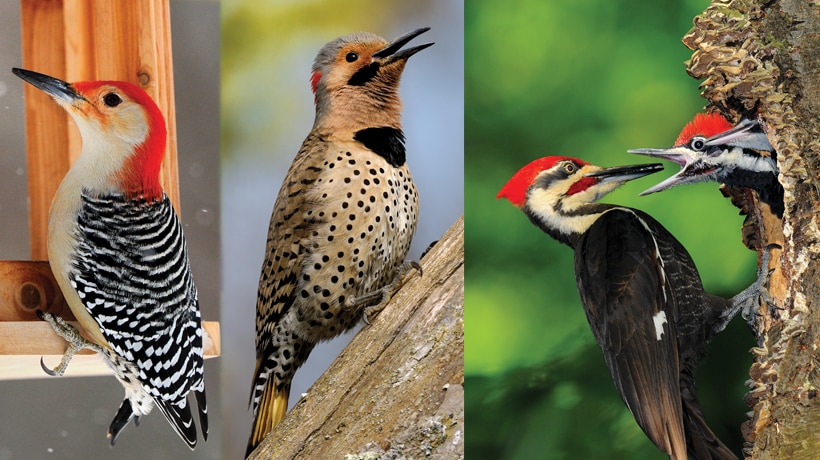Introducing the Secrets of Woodpeckers: Habits, Habitat, and A Lot More
Woodpeckers, with their special behaviors and specialized adjustments, have long captivated researchers and nature enthusiasts alike. These exceptional birds have a variety of fascinating secrets that dropped light on their survival approaches, habitat preferences, and detailed communication techniques. By revealing the secrets bordering woodpeckers' habits and environment selections, a deeper understanding of these bird marvels emerges, offering a look into their interesting globe. So, what makes these birds truly phenomenal, and exactly how do they browse their environment with such precision and skill? Allow's discover the captivating realm of woodpeckers and unwind the enigmatic information that make them such fascinating subjects of research.
Woodpecker Habits Insights
In examining woodpecker actions, an interesting display screen of specialized abilities and adaptations emerges, shedding light on their exceptional ecological particular niche. Woodpeckers, understood for their distinct drumming on trees, possess a selection of behavioral attributes that contribute to their survival and success in their setting.
Additionally, woodpeckers show a special feeding behavior defined by their capacity to essence pests from tree bark using their specialized beaks. Their lengthy, barbed tongues help in catching target, while their strong neck muscle mass provide stability and accuracy during pecking movements. This feeding strategy enables woodpeckers to access concealed insect larvae and remove them with exceptional efficiency.
Environment Preferences and Option
What variables affect the habitat choices and option of woodpeckers? One important factor influencing woodpecker environment choice is the accessibility of ideal nesting websites. Woodpeckers generally like woodlands with a mix of mature trees that supply enough opportunities for cavity excavation.
Furthermore, woodpeckers reveal a choice for environments with a bountiful supply of food resources. They are primarily insectivorous, feeding on beetles, ants, larvae, and various other pests located in worn out timber or tree bark. Woodpeckers tend to prefer woody areas with a diverse insect population to fulfill their nutritional requirements.
Furthermore, the existence of dead or rotting trees is one more key consider woodpecker habitat option. These trees not only provide food sources yet additionally use appropriate substrate for tooth cavity excavation. Dead trees are important for the maintenance of healthy and balanced woodpecker populations, as they play a vital duty in the woodpeckers' life cycle and community characteristics.
Feeding Behaviors and Diet Plan Make-up
Woodpeckers demonstrate a specialized feeding habits focused on foraging for bugs within various habitats. In enhancement to insects, woodpeckers likewise eat tree sap, fruits, nuts, and seeds, adding range to their diet regimen depending on the season and schedule of food sources.
The foraging methods of woodpeckers are well-adapted to their arboreal way of life (Woodpeckers in Florida). Their capacity to dig deep into wood not only supplies them with food yet also helps in producing nesting dental caries and developing territories. Woodpeckers play a crucial role in preserving the health and wellness of woodlands by managing insect populations and helping in the disintegration of timber. Comprehending their feeding routines and diet plan structure is necessary for preservation efforts focused on preserving these unique and valuable birds.
Drumming Appears and Interaction
Using quick drumming audios on different surfaces, woodpeckers use an unique type of interaction to indicate territory boundaries and draw in companions. This drumming behavior is not just a means of interaction however likewise serves find out this here as a means for woodpeckers to establish their presence within a certain area. The intensity, rate, and pattern of the drumming can convey vital info to other woodpeckers in the location.
Woodpeckers utilize drumming audios to reveal their presence in a region and to caution off possible trespassers. The loud and repetitive nature of the drumming works as a clear signal to other woodpeckers that the location is already asserted. This assists in reducing problems and reducing physical confrontations in between individuals.

Survival Adaptations and Specialized Anatomy

Verdict
Finally, woodpeckers show one-of-a-kind actions, such as drumming sounds for interaction, and have actually specialized anatomy for survival in their chosen environments. Their feeding routines helpful resources and diet plan structure further show their versatility to various settings. By comprehending these aspects of woodpeckers, scientists and preservationists can better shield and protect these fascinating birds and their ecosystems.